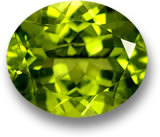The Olivine Mine Provides Peridot in Hebei, China
Most gemstones are formed in earth's crust, but Peridot is formed much deeper in the mantle region. Peridot crystals form in magma from the upper mantle and are brought to the surface by tectonic or volcanic activity where they are found in extrusive igneous rocks. Historically the volcanic island Zabargad (St. John) in the Red Sea was the location of the most important deposit. It was exploited for 3500 years before it was abandoned for many centuries; later, it was rediscovered around 1900 and has been heavily exploited ever since.
Today, the most important deposits are found in Pakistan (in the Kashmir region and the Pakistan-Afghanistan border region). Beautiful material is also found in upper Myanmar (Burma) and Vietnam. Other deposits are found in Australia (Queensland), Brazil (Minas Gerais), China, Kenya, Mexico, Norway (north of Bergen), South Africa, Sri Lanka, Tanzania and the United States (Arizona and Hawaii).
Peridot is one of the few gemstones that comes in a single color. The depth of green depends on its level of iron content. Peridot's color can vary from yellow-green and olive to brownish green and looks best under natural daylight. Its vivid green color does not change under artificial light. The best colored peridot has an iron percentage of less than 15% and typically includes some trace elements of nickel and chromium, which contribute to its color. A deep and intense green colored Peridot is considered the most desirable and the most valuable.

 RSS Feed
RSS Feed


